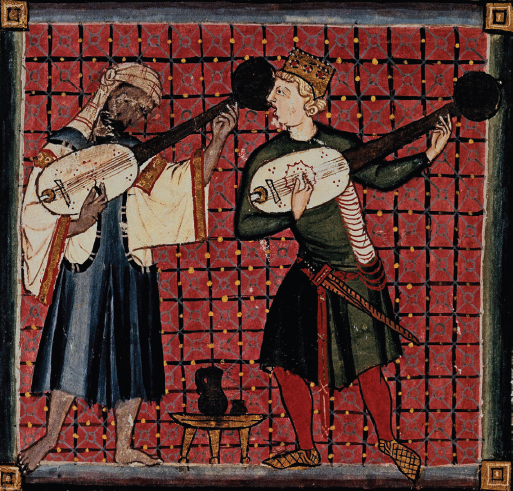Troubadour and Trouvère Songs
Large groups of court songs have been preserved from the twelfth and thirteenth centuries, the Age of Chivalry. The noble poet-
My love and I keep state
In bower,
In flower,
Till the watchman on the tower
Cry:
“Up! Thou rascal, Rise,
I see the white Light
And the night Flies.”
Troubadour alba
Perhaps some of these noble songwriters penned the words only, leaving the music to be composed by jongleurs, the popular musicians of the time. The music is relatively simple — just a tune, in most cases, with no indication of any accompaniment. We hear of jongleurs playing instruments while the trouvères sang; they probably improvised some kind of accompaniment, or played a drone, such as we heard in Hildegard’s “Columba aspexit.”

There are some moving and beautiful troubadour poems — crusaders’ songs, laments for dead princes, and especially songs in praise of the poets’ ladies or complaints of their ladies’ coldness. One interesting poetic type was the alba, the “dawn song” of a knight’s loyal companion who has kept watch all night and now warns him to leave his lady’s bed before the castle awakes.